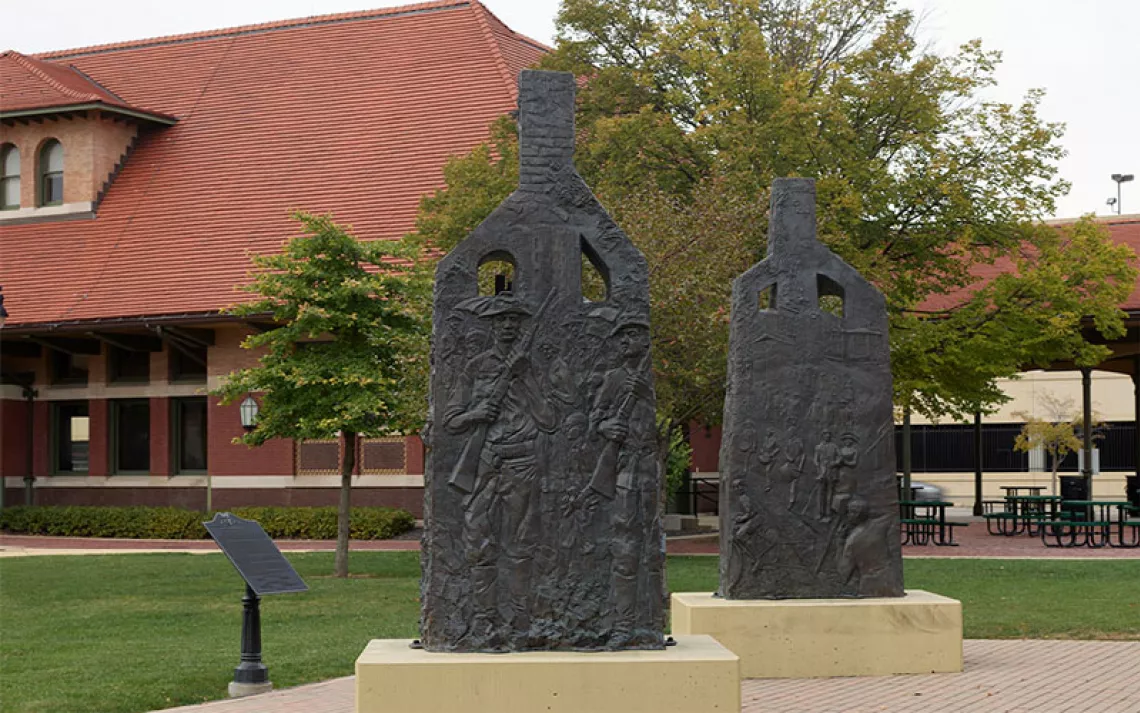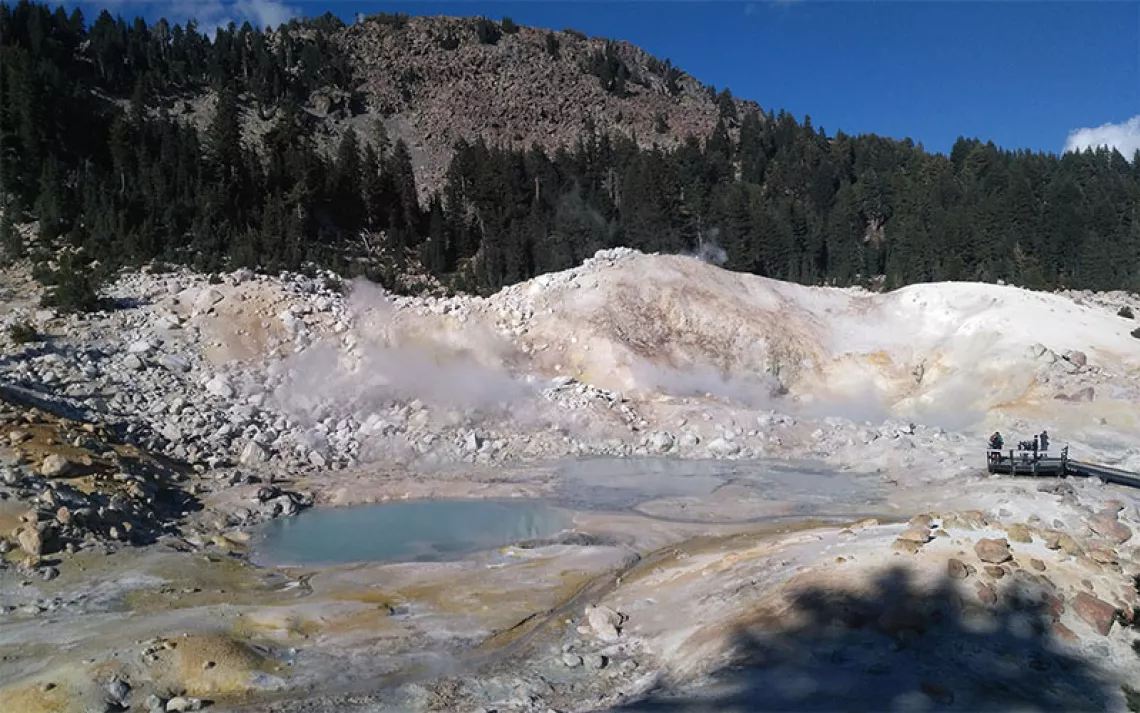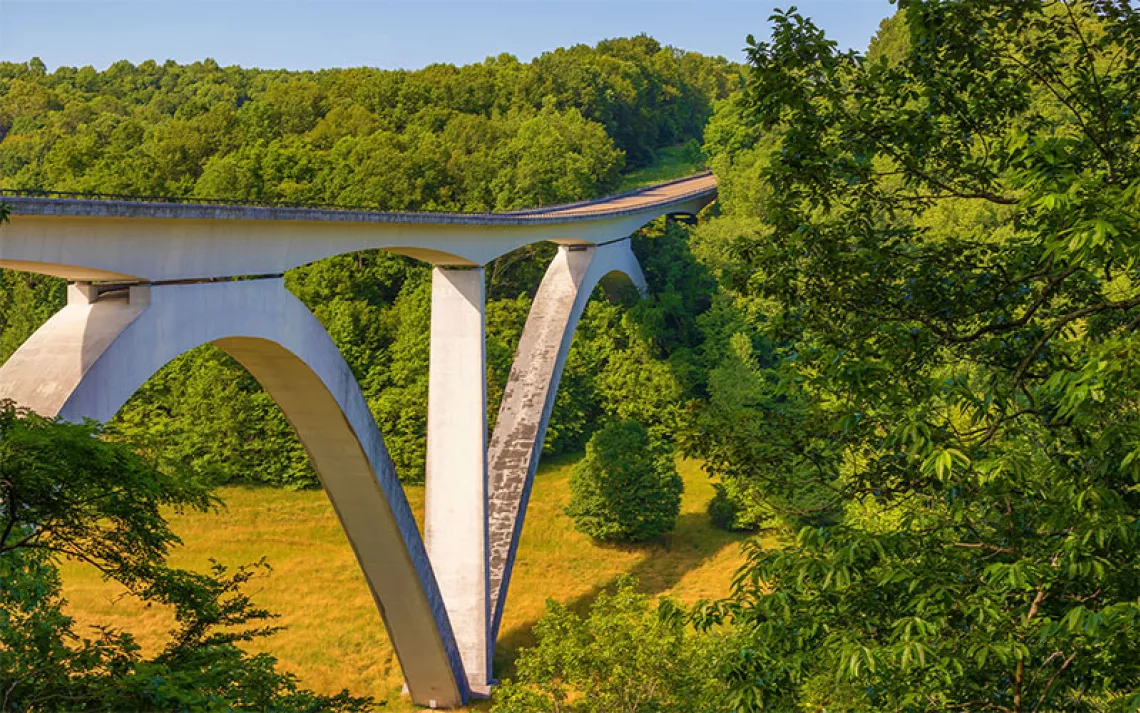"He Sung the Glory of Nature”
John Muir’s ascent of Grandfather Mountain

Courtesy of Randy Johnson
John Muir had one of his most iconic wilderness experiences in North Carolina. His Blue Ridge rapture on the summit of Grandfather Mountain was a high point in his life as a preservationist and nature writer. Today, the nearly-6,000-foot peak near Boone is the acknowledged crown jewel of the Blue Ridge Parkway, the most visited unit of the entire national park system. I uncovered new detail about Muir’s experience there during four years of research for Grandfather Mountain (University of North Carolina Press, June 2016), affirming why Muir is known as “the father of the national parks.”
Muir first ventured to the Southern Appalachians in 1867; he later returned in 1898 after a series of historic achievements that include the preservation of Yosemite Valley (1890) and founding of the Sierra Club (1892). He was a national figure by then, but most of his books were yet to be written.
Harvard Arboretum director Charles Sprague Sargent suggested an autumn Southern Appalachian sojourn to Muir in 1897 while they were in Alaska with naturalist William Canby. The three men had been fast friends since meeting through Asa Gray—easily the 19th century’s preeminent botanist. Muir was excited about seeing the extravagant “Alleghany (sic) tree festival.” He wrote, “I don't want to die without once more saluting the grand, godly, round-headed trees of the east side of America that I first learned to love.”
Muir wasn’t feeling well after the train trip. But he bounced back by the time they got off the East Tennessee & Western North Carolina Railroad and reached the Cloudland Hotel, 6,300 feet atop Roan Mountain. “This air has healed me,” the 60-year-old Muir wrote to his wife on hotel stationery.
In the 1915 article “The Conversation of John Muir,” Melville B. Anderson quoted an anecdote Muir shared with him involving a certain curmudgeonly friend that was on the trip. Muir chose not to name the friend in question, but according to my research, he was most likely Charles Sargent, the staid Bostonian and Harvard academic that Appleton’s Cyclopaedia of American Biography describes as “colder than the . . . notoriously chilly Boston society.”
On that fall trip to the Southern mountains, Anderson wrote, Muir “got the better of him once.” “The autumn frosts were just beginning, and the mountains and higher hilltops were gorgeous,” Anderson said. He quotes Muir as telling him:
My friend and the rest were making a little fun of me for my enthusiasm. We climbed slope after slope through the trees till we came out on the bare top of Grandfather Mountain. There it all lay in the sun below us, ridge beyond ridge, each with its typical tree-covering and color, all blended with the darker shades of the pines and the green of the deep valleys. . . . I couldn't hold in and began to jump about and sing and glory in it all. Then I happened to look round and catch sight of [the then anonymous sourpuss] standing there as cool as a rock, with a half-amused look on his face at me but never saying a word.
Anderson quotes Muir as telling Sargent, “Why don't you let yourself out at a sight like that?”
“I don't wear my heart upon my sleeve,” Sargent retorted.
“Who cares where you wear your little heart, man?” Muir cried. “There you stand in the face of all Heaven come down on Earth, like a critic of the universe, as if to say. ‘Come, Nature, bring on the best you have: I'm from BOSTON!’”
Muir’s experience mimics an even earlier iconic incident of Appalachian exploration: In 1794, legendary botanist Andre Michaux reached Grandfather’s peak and, thinking “he’d climbed the highest mountain of all North America,” also burst into song, shouting the Marseilles from the summit.
Both Muir and Michaux were agog at Grandfather’s rocky, almost alpine peaks, and the plummet to the flatland Carolinas baking far below. The mountain’s towering virgin spruce and fir forest also made an impression. This “virtually primeval” tract had been growing untouched for millennia; its trees ultimately fell to the saw before the Roosevelt administration’s 1911 Weeks Act, which created national forests in the east. The ravaged land below the peak subsequently became the first national forest in the east, Pisgah, and the first district on that forest was named “Grandfather.”
On August 25, the National Park Service will celebrate its 100th anniversary, thanks in part to Muir’s tireless advocacy on behalf of wild places. What Muir and Michaux experienced at Grandfather Mountain perfectly epitomizes the kind of experience the national parks are intended to provide. It is an experience Robert Underwood Johnson, the influential editor who published Muir’s writings, perhaps best captured when he wrote in the magazine Century, “The world will look back to the time we live in and remember the voice of one crying in the wilderness and bless the name of John Muir. . . . He sung the glory of nature like another Psalmist, and, as a true artist, was unashamed of his emotions."
 The Magazine of The Sierra Club
The Magazine of The Sierra Club



